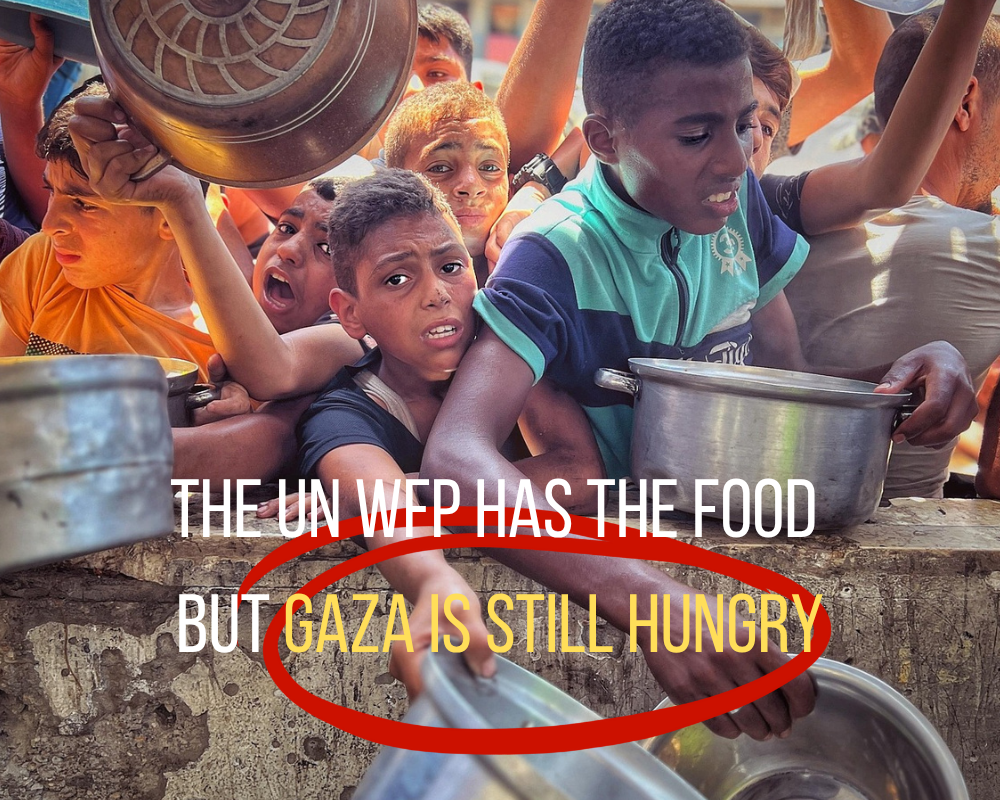Gaza is Hungry
Since the reopening of Gaza’s border crossings to humanitarian aid on May 21, the World Food Programme (WFP) has offloaded over 26,000 metric tons (MT) of life-saving food—equivalent to 1,387 trucks—at holding areas near the Kerem Shalom (south) and Zikim (north) border points.
Inside Gaza, WFP teams have managed to collect 22,000 MT from these holding areas, dispatching 1,833 trucks to reach starving communities. However, this is only a fraction of what’s needed: Gaza requires over 62,000 MT of food aid every month to meet basic needs for more than two million people.
Currently, around 3,500 MT of food—roughly 300 trucks’ worth—awaits collection at the border. Aid must pass strict food safety checks before delivery, but logistical and security obstacles continue to hinder progress. Here’s the breakdown on why we’re at this point right now when it comes to food security in Gaza?
Bottlenecks and Bureaucracy
Between July 19 and July 25, WFP:
Dispatched 349 trucks carrying 4,200 MT of food
Submitted 138 convoy requests—only 76 were approved
Faced delays of up to 46 hours per convoy, with final deliveries taking up to 12 hours on average
Currently, only two crossing points are open, and just 60 vetted truck drivers are authorized to operate inside Gaza. The lack of secure and accessible routes causes crowds of desperate civilians to gather along convoy paths, heightening risks for all involved.
Security and Safety Concerns
Delays and limited routes expose WFP teams and civilians to grave security risks, including:
Drone surveillance
Sniper fire
Airstrikes
Bombardments near convoy routes
Recent violent incidents near humanitarian trucks underscore the urgent need for safer access. Any harm to civilians seeking aid is unacceptable.
Signs of Hope?
Israeli authorities have pledged to ease restrictions by opening more routes, reducing delays, and ensuring convoys can move without nearby armed presence. Since July 23, WFP has noted some improvements in convoy approvals and speed—but a sustained and reliable commitment is essential to prevent famine and avert a full-blown humanitarian catastrophe.
Gaza Faces Catastrophic Hunger: WFP Calls for Immediate Scale-Up of Aid
The humanitarian crisis in Gaza has reached critical levels, with people dying from hunger and a collapsing food system unable to meet even the most basic needs.
A recent WFP assessment reveals that:
1 in 3 people go days without eating
470,000 people are living in famine-like conditions (IPC Phase 5)
Malnutrition is surging, with 90,000 women and children urgently needing treatment
For many, food aid is the only source of sustenance
What WFP Needs to Save Lives
The World Food Programme is prepared to rapidly scale up life-saving assistance, but urgent action is required to enable full humanitarian access. WFP calls for:
At least 100 aid trucks per day, consistently entering from the north, center, and south
Faster truck clearance and dispatch from border crossings into Gaza
No armed presence or violence near convoy routes or distribution points
Uninterrupted communications to allow coordinated humanitarian operations
A sustained ceasefire to create safe conditions for scaled, impactful aid
WFP currently has over 170,000 metric tons of food in or en route to the region—enough to feed 2.1 million people for nearly three months. With experienced teams and proven logistics systems in place, WFP is ready to act—but it needs safe, sustained access to deliver at scale.


